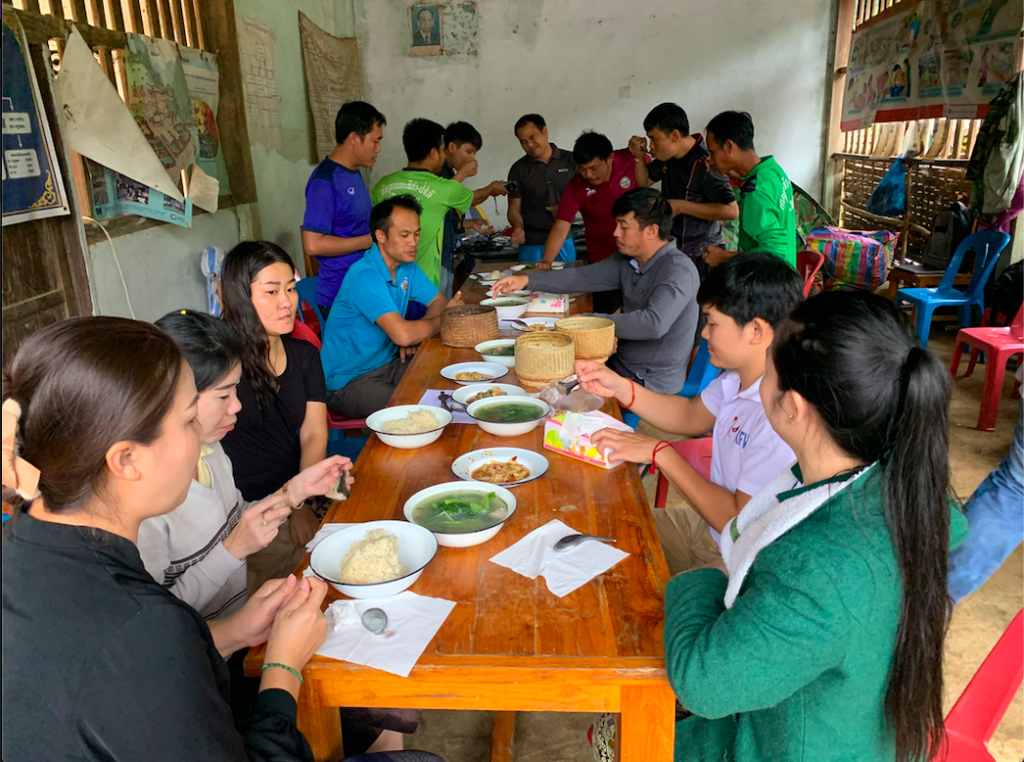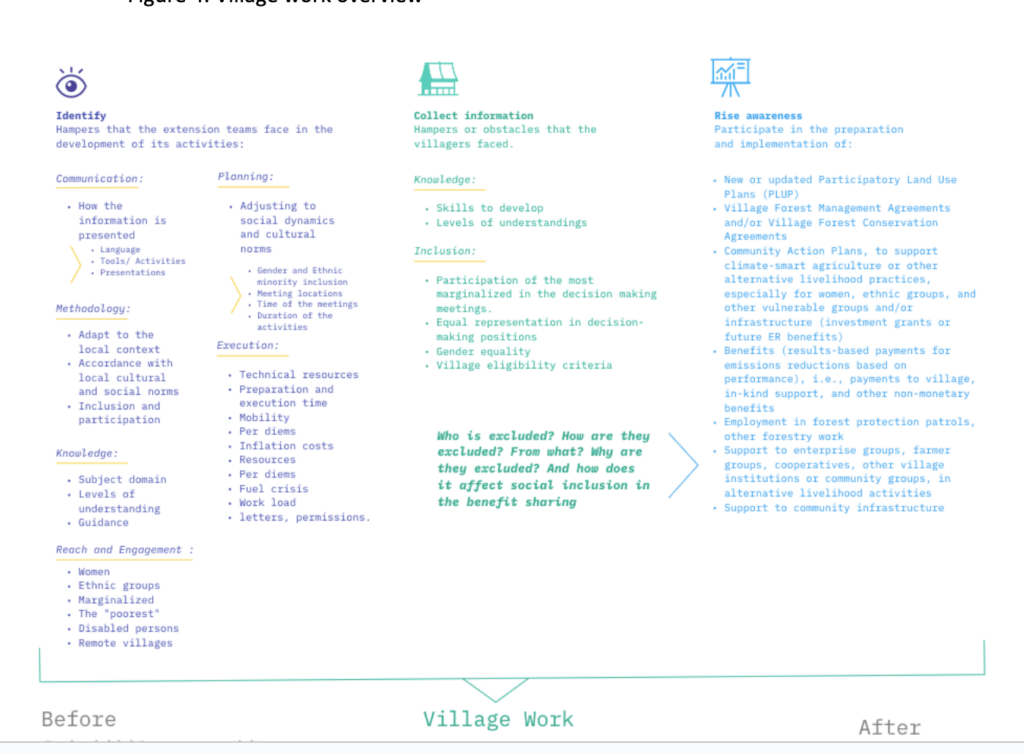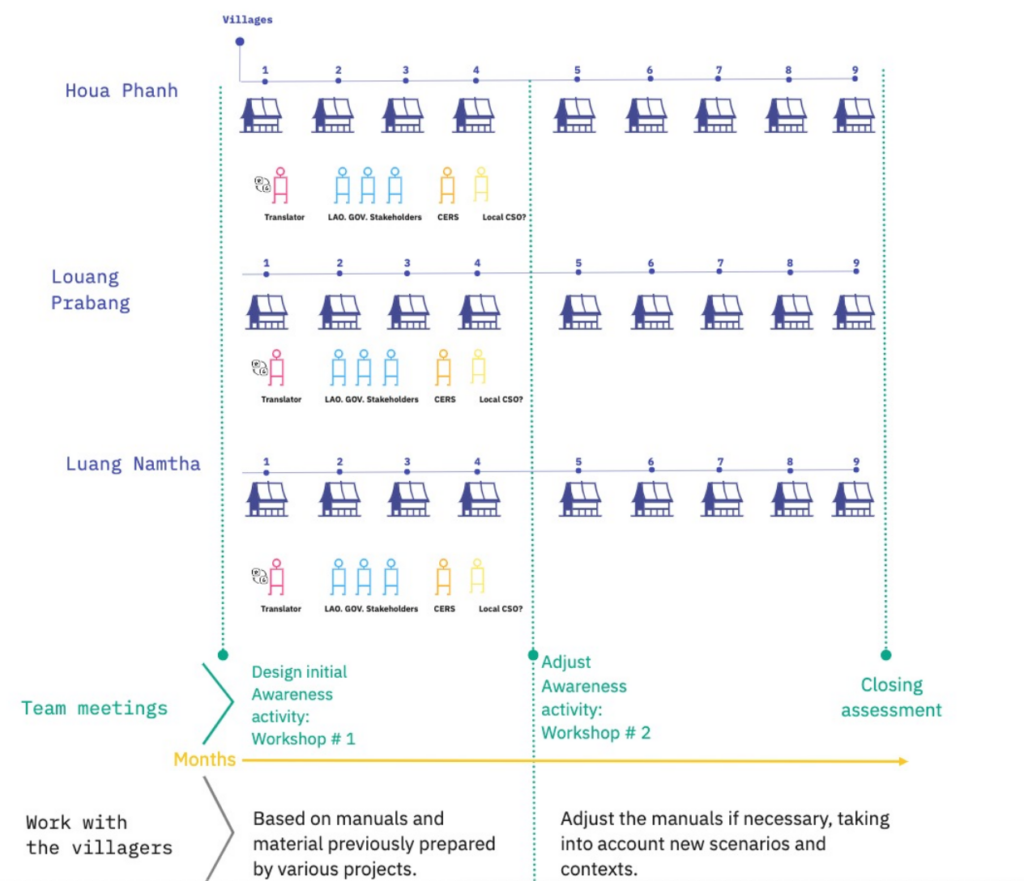Enhancing Access to Benefits while Lowering Emissions (EnABLE) is a multi-donor trust fund (MDTF) under the Climate Emissions Reduction Facility (CERF)
January 2022 CERS and WORLD BANK / Human centered design Director- Village outreach international expert lead
As the EnABLE HCD Director and Outreach Coordinator, I led a World Bank project that aimed to improve the inclusion of disadvantaged groups in emissions reduction programs. I served as a liaison for the project with government authorities, village authorities, and other local partners. Worked closely with the National Village Outreach Expert to organize and lead the CERS EnABLE team and partners in piloting activities. We placed particular emphasis on working with women, ethnic minority groups, the disabled, and other vulnerable social groups to ensure that they could participate in the ER-Program and obtain an equitable share of the benefits. To report progress to National and World Bank authorities, I have developed a comprehensive list of tools.
With the Lao Women Union team, government officials, and the national expert, we were able to successfully visit villages of different ethnicities in remote and difficult-to-access areas and document their challenges in accessing carbon benefits, especially for the female population, as well as the challenges they face with social norms in some minority ethnicities in Laos.
With documentation, interviews, data collection, and visits to the villages, we generated a final document that we wrote with the national expert supporting a concept note. We were able to justify funding with solid support so that the World Bank team could secure the budget for the implementation of EnABLE Phase 2 in Laos.
With the national expert, we created a comprehensive database and map of actors including national and international stakeholders, NGOs, civil society organizations, as well as key actors in villages, provinces, and districts who are directly or indirectly involved in forest emissions reduction projects. We gained an understanding of how projects work in villages and identified gaps and success stories in terms of environmental and social and gender equality and social inclusion, which we will use to transfer knowledge in the future.
This is a list of key words that we have compiled whit Phonevilay Soukhy my Lao collage, that have proven to be valuable in understanding the wide range of stakeholders involved in the project.

- Language:Adaptation to the local context and complexity of concepts
- Platforms:
Presentations, posters, video, audio, handout
- Tools kits
- Community engagement activities
- Accordance with local cultural and social norms
- Inclusion: Participation of the most marginalized in the decision making meetings
- Recognition of traditional knowledge
- Social behavior and customary norms
- Women
- Ethnic minorities groups
- The Disabled
- Remote villages (Marginalized)
- Youth
- Gender
- Elders
- Skills
- Levels of understanding
- Subject domain
- Capacity, education and training
- Address the needs of families living in poverty
- Adjusting to social dynamics and cultural norms
- Prior consultation (Gender and ethnic compositions)
- Meeting locations
- Timeframe: Duration of the activities and time of the meetings
- Technical resources
- Mobility, Inflation of costs,
- Resources
- Per diems
- Fuel crisis
- Workload
- Letters and permissions
- Infrastructure
- Time poverty
- lack of financial resources
- lack of access
- lack of awareness
- Acknowledgment without implementation
- Social and cultural capital
- Incentives / Motivations
- Safeguards
- Paradigms
- Segregation
- Land Tenure
- Commodity markets


This map was created with the purpose of showing the global panorama of the villages that we decided to visit and their locations, as well as the ethnic groups that comprise them and general photographs of the villages. Each village pin has a snapshot of the location, date of visit, district, ethnic composition.
